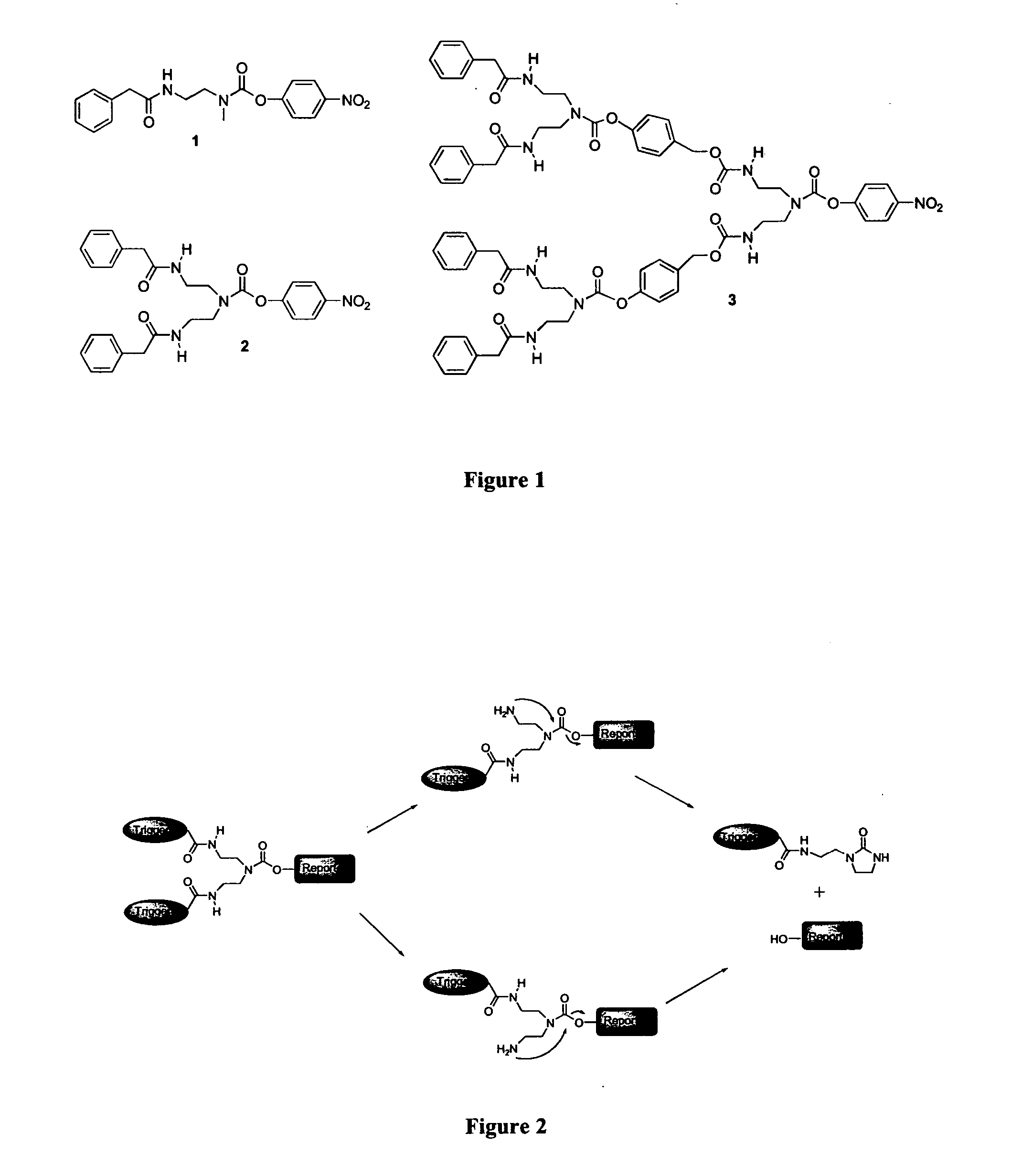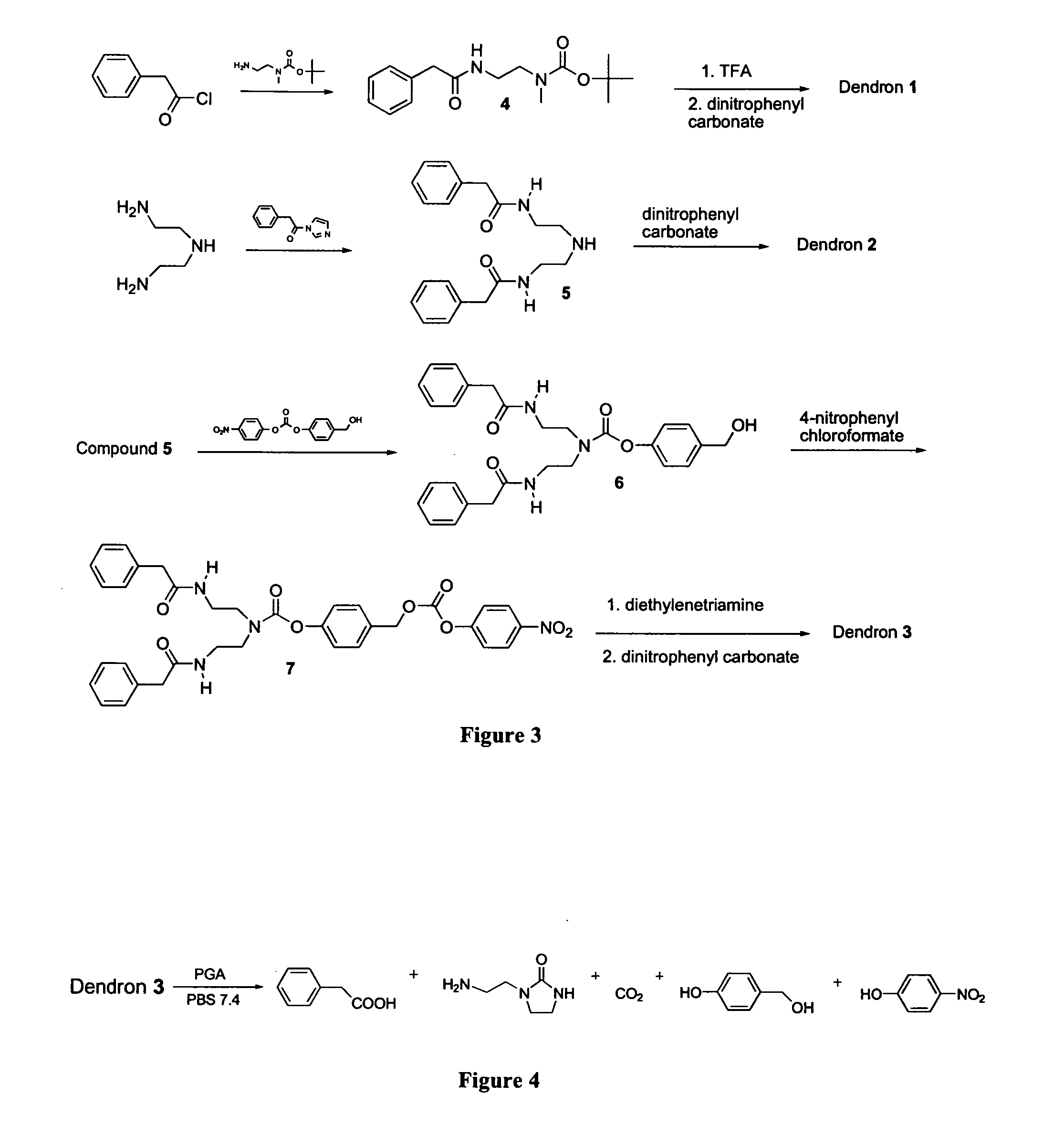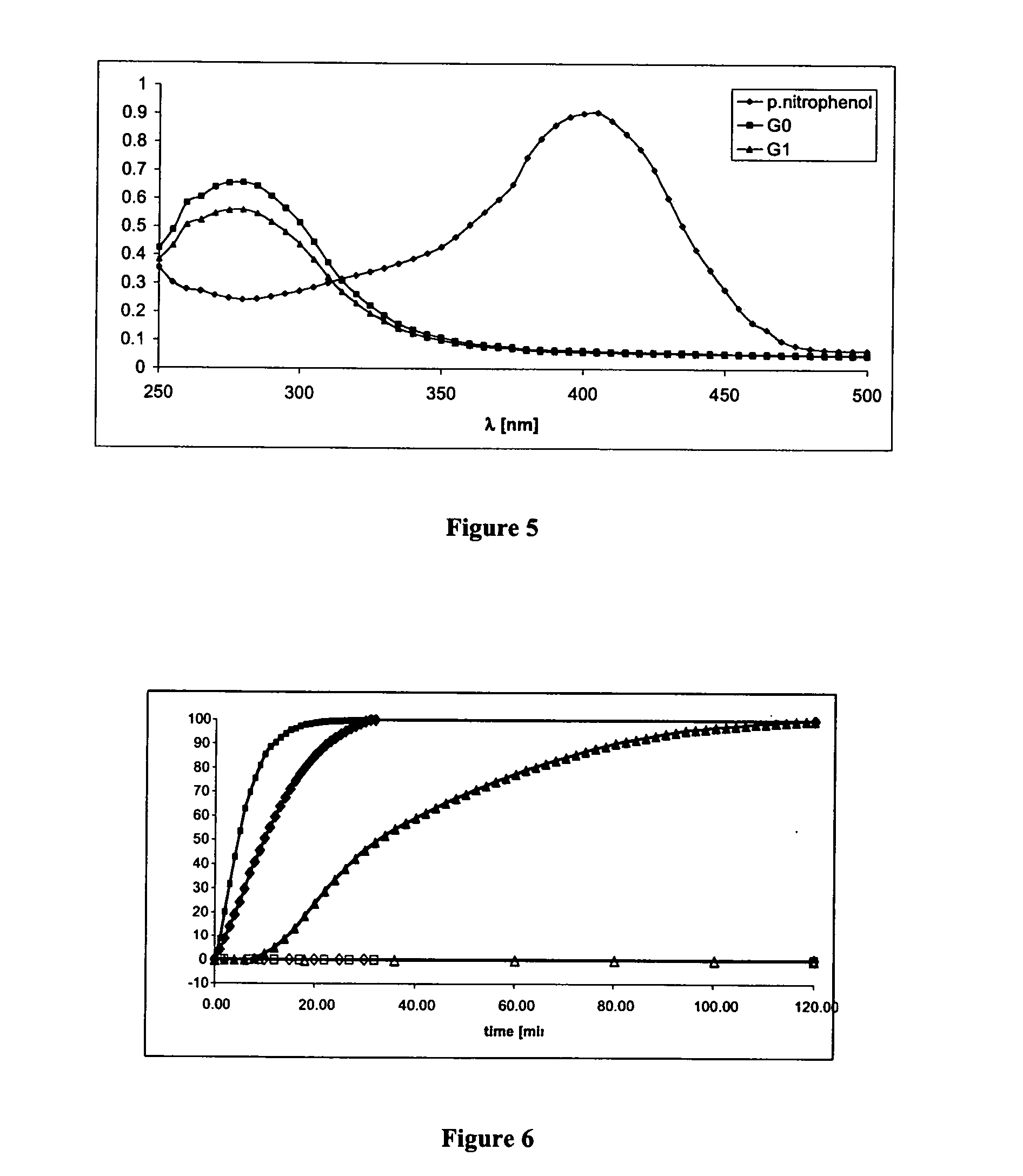Multi-triggered self-immolative dendritic compounds
a dendritic compound and self-immolation technology, applied in the field of dendritic compounds, can solve the problems of limited system, limited action of single mode of activation, and inability to enable simultaneous release of two distinct molecules
- Summary
- Abstract
- Description
- Claims
- Application Information
AI Technical Summary
Benefits of technology
Problems solved by technology
Method used
Image
Examples
example 1
Design and General Synthesis of G0, G1 and G2 Self-Immolative Dendritic Compounds with a Single (G0) and Multi (G1 and G2) Enzymatic Substrates as Trigger Units
[0353] In a search for fully biodegradable dendritic compounds, which have reasonable solubility in water and are disassembled through multi-enzymatic triggering followed by self-immolative chain fragmentation, models of exemplary G0, G1 and G2 dendritic compounds were designed and are presented in FIG. 1 (Compounds 1-3, respectively). In the G0 model, the dendron's main building block is selected based on ethylenediamine, which has one primary and one secondary amine functionalities. In the G1 and G2 models, the dendron's main building block is selected based on diethylenetriamine, which has two primary and one secondary amine functionalities.
[0354]FIG. 2 presents an exemplary G1-dendritic compound according to this model. As shown in FIG. 2, the secondary amine is attached to a reporter group while the two primary amines ...
example 2
Design and General Synthesis of a G1 Self-Immolative Dendritic Compound Having Different Enzymatic Substrates as Trigger Units (a Molecular OR Logic Gate)
[0395] Incorporation of different substrates in the dendritic compound periphery, as cleavable trigger units should allow the use of diverged triggering enzymes [Gopin, et al., (Supra)]. This concept may be particularly important in the field of prodrug mono-therapy [de Groot et al., Curr. Med. Chem., 8, 1093-1122 (2001)], in cases where a drug molecule is incorporated as a releasable chemical moiety (replacing the reporter molecule described in Example 1 hereinabove) [Shabat et al., Proc. Natl. Acad. Sci. U.S.A., 96, 6925-6930 (1999); Shabat et al., Proc. Natl. Acad. Sci. U.S. A., 98, 7528-7533 (2001)], especially in circumstances that involve more than one disease—(e.g., tumor-)associated or targeted enzyme with different catalytic activity.
[0396] Molecular OR logic gate: Masking of a functional group in a targeted drug with a ...
example 3
Activation of a Molecular OR Logic Trigger by a Dual Triggering Mechanism with PGA or Catalytic Antibody 38C2
[0415] According to the general pathway presented in FIG. 8, cleavage of either Trigger I or Trigger II generates intermediates I or II, respectively, which self-immolate to release a drug molecule. In model Compound 8 (see, FIG. 9), antibody 38C2 or PGA catalyzes the cleavage of a corresponding substrate trigger unit, to thereby generate the formation of intermediates 9 or 10 respectively, and subsequent intra-cyclization releases a 4-nitrophenol reporter molecule. The following assay confirms the above-described pathway.
[0416] 4-Nitrophenol release analysis—General Protocol: Compound 8 (5 μl, 10 mM) in CH3CN was dissolved in 95 μl of PBS solutions to yield 500 μM solutions. All solutions were kept at 37° C. PGA (3.5 mg / ml) and Ab38C2 (10 mg / ml) PBS solutions were used to activate Compound 8. Reporter release was monitored by following the formation of 4-nitrophenol with v...
PUM
| Property | Measurement | Unit |
|---|---|---|
| molecular weight | aaaaa | aaaaa |
| pH | aaaaa | aaaaa |
| wavelength | aaaaa | aaaaa |
Abstract
Description
Claims
Application Information
 Login to View More
Login to View More - R&D
- Intellectual Property
- Life Sciences
- Materials
- Tech Scout
- Unparalleled Data Quality
- Higher Quality Content
- 60% Fewer Hallucinations
Browse by: Latest US Patents, China's latest patents, Technical Efficacy Thesaurus, Application Domain, Technology Topic, Popular Technical Reports.
© 2025 PatSnap. All rights reserved.Legal|Privacy policy|Modern Slavery Act Transparency Statement|Sitemap|About US| Contact US: help@patsnap.com



